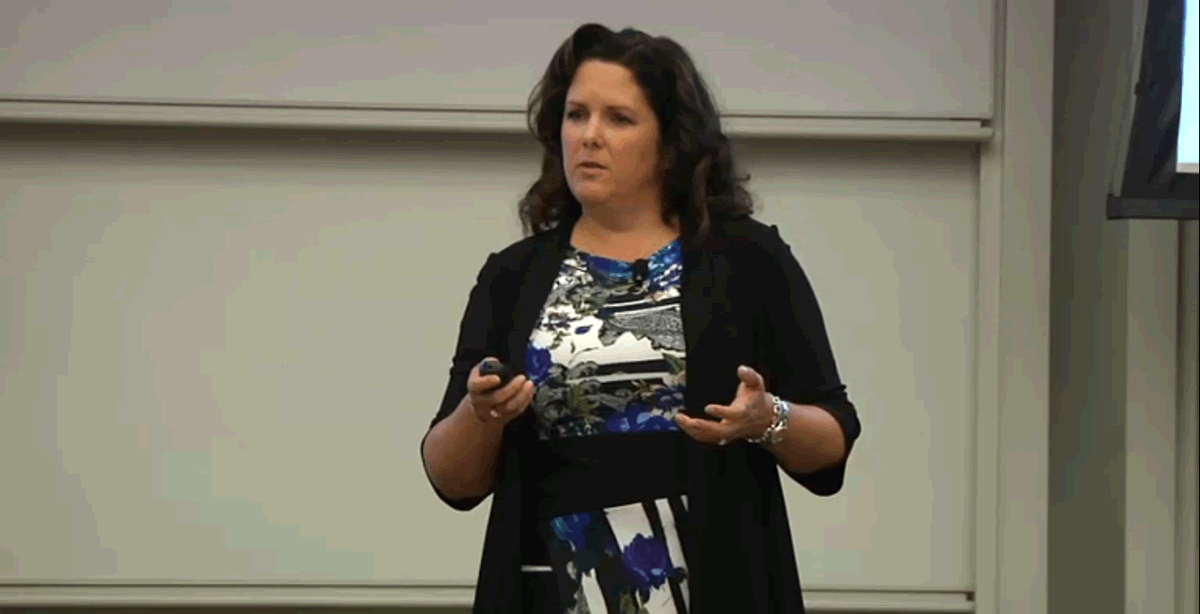by Matthew Borin, CFA Institute
The precipitous fall in oil prices was not the result of reduced demand, according to Jennifer Stevenson.
In a contrarian defense of the energy industry, Stevenson, a portfolio manager with Dynamic Funds, explained that the oil market correction — which saw prices fall from around $100 per barrel of West Texas Intermediate (WTI) after the Great Recession to around $26 per barrel last February — was not due to any fundamental supply-and-demand shift.
According to Stevenson, demand has not fallen since 2008 to 2009, despite the precipitous drop in prices. The demand growth rate slowed, and the resulting glut of oil was due to supply outpacing demand, she explained during her presentation at the 2016 Financial Analysts Seminar. Oversupply reached three million barrels per day (bpd) above the 95 million bpd demand.
That alone, however, is still not enough to explain a 75% drop in oil prices.
Another factor was the rapid strengthening of the US dollar in 2015. Since oil is traded in dollars globally, there can be periods of robust inverse correlations between the strength of the dollar and the price of oil. Since early 2014, the inverse correlation between WTI prices and the trade-weighted index of the dollar has been 90%.
“It’s not high all the time because the fundamentals will win out over time,” Stevenson said. “But when there’s an oversupply issue and you’ve got a strengthening in the US dollar, that will play a really significant role.”
Futures trading intensified the fall in oil prices. Commodity markets exacerbate price swings because the volume of oil traded in the top six futures exchanges is 31 times daily consumption.
“The put options in particular were dramatically skewed lower and lower. And you could just watch the oil price trade, and I would call it these little vortexes,” Stevenson explained. “It would get to a point where it was close enough to the next put exercise and it would just whip down two more dollars down to that put exercise price, which were conveniently stacked in $5 increments.”
Stevenson identified several tailwinds that could propel prices higher.
When oil prices bottomed out, many reserves became uneconomical. There were almost 1,900 total land rigs operating in the United States in the second half of 2014. In May 2016, the rig count bottomed out at under 400. Though the rig count is recovering Stevenson noted, there is a six to nine month lag between building a rig and production coming on line, so supply will be lower than the rig count indicates as new operations start producing. She also said that low oil prices will result in a $1-trillion reduction in spending on oil projects between 2015 and 2020, dampening supply growth.
On the demand side, when gasoline is cheap, incentives to buy fuel-efficient vehicles and reduce driving weaken. Fuel efficiency weighted by type of vehicle sold declined after oil prices crashed, as larger and more powerful vehicles gained favor with buyers. Miles driven also increased. As a result, demand for gas went up.
“What drives long-term energy demand growth? People and income,” Stevenson concluded.
A report from Exxon predicted that the global population will grow from 7.3 billion in 2015 to 9.2 billion in 2040, and GDP will rise from $69 trillion to $164 trillion. The report also anticipates 1.3 billion more passenger cars and trucks in use over that time frame. The end result would be a 25% increase in energy demand, mostly from emerging markets. Though Exxon only expects oil demand to grow by 0.7% in that time, a much lower rate than renewables, it will remain the largest energy source, driven by transportation and chemicals.
Even assuming aggressive adoption rates of pure electric vehicles (10% of sales in 2030, 20% in 2050), oil demand would plateau at 105 million barrels per day in 2050, according to Stevenson.
“I worry how we get the supply to get there in the first place,” she added.
If you liked this post, don’t forget to subscribe to the Enterprising Investor.
All posts are the opinion of the author. As such, they should not be construed as investment advice, nor do the opinions expressed necessarily reflect the views of CFA Institute or the author’s employer.
Image credit: CFA Institute
Copyright © CFA Institute














